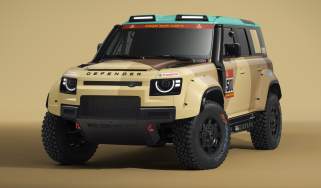BMW 3-series – engine, gearbox and technical highlights
Four-cylinder petrol is dull, but 3-litre straight-six is excellent. All are auto-only
At the core of the 3-series is a chassis that makes extensive use of aluminium, with the bonnet, front wings, subframe, front struts and other components made from the material. That’s partly why it's a relatively light saloon by today’s standards, coming in at 1515kg in basic form. That rises to a significantly chunkier 1835kg for the PHEV, however, and you can add another 60-70kg for Touring models.
There are three engines to choose from with the latest 3-series (not including the M3 hot rod), each paired with an eight-speed torque converter auto with no option of a manual. A 2-litre B48 four-cylinder petrol kicks off the range in the 320i, producing 181bhp and 221lb ft. Above this sits the 330e, using the same 2-litre engine coupled with an electric motor integrated into the gearbox for a healthier 288bhp and 310lb ft. The latest 330e gets a new 19.5kWh battery pack to extend its electric range to an impressive 63 miles, as well as three-phase 11kW AC charging capability. Topping up the battery from empty takes less than two-and-a-half hours.
The M340i gets a classic BMW straight-six – a mild-hybrid B58 in this case – displacing 3-litres and turbocharged to produce 369bhp and 369 lb ft. The chassis also gets a bespoke setup and a rear-biased xDrive four-wheel drive system to make use of all that grunt, plus an M Sport differential at the rear. M Sport brakes also come as standard.
As part of the latest update, all 3-series models have been honed to deliver a better ride and handling balance. Tweaks to the chassis, including stiffer rear damper mounts and lighter steering efforts in Comfort mode, have been designed to make it more poised while improving comfort. To make the most of this, M Sport models are offered with an Adaptive M suspension option that brings electronically adjustable dampers.



